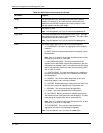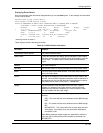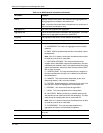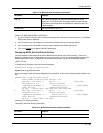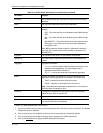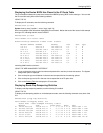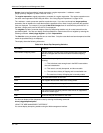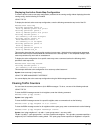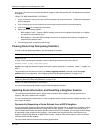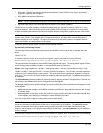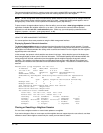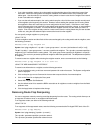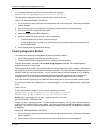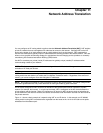
Advanced Configuration and Management Guide
peer group. The <as-num> parameter specifies all neighbors within the specified AS. The all parameter specifies
all neighbors.
USING THE WEB MANAGEMENT INTERFACE
1. Log on to the device using a valid user name and password for read-write access. The System configuration
panel is displayed.
2. Click on the plus sign next to Command in the tree view to expand the list of command options.
3. Click on the Clear
link to display the Clear panel.
4. Select one of the following options:
• BGP Neighbor Traffic – clears the BGP4 message counters for all neighbors (the default) or a neighbor
you select from the pulldown menu.
• BGP Neighbor – clears the BGP4 message counters for all neighbors (the default) or a neighbor you
select from the pulldown menu.
5. Click the Apply button to implement the change.
Clearing Route Flap Dampening Statistics
To clear route flap dampening statistics, use the following CLI method.
NOTE: Clearing the dampening statistics for a route does not change the dampening status of the route.
USING THE CLI
To clear all the route dampening statistics, enter the following command at any level of the CLI:
HP9300# clear ip bgp flap-statistics
Syntax: clear ip bgp flap-statistics [regular-expression <regular-expression> | <address> <mask> | neighbor <ip-
addr>]
The parameters are the same as those for the show ip bgp flap-statistics command (except the longer-
prefixes option is not supported). See
“Displaying Route Flap Dampening Statistics” on page 10-79.
NOTE: The clear ip bgp damping command not only clears statistics but also un-suppresses the routes. See
“Displaying Route Flap Dampening Statistics” on page 10-79.
USING THE WEB MANAGEMENT INTERFACE
You cannot clear dampening statistics using the Web management interface.
Updating Route Information and Resetting a Neighbor Session
The following sections describe ways to update route information with a neighbor, reset the session with a
neighbor, and close a session with a neighbor.
You can use the dynamic refresh feature or reset a neighbor session to place route filter updates into effect. See
each section for details.
Dynamically Requesting a Route Refresh from a BGP4 Neighbor
You can easily apply changes to filters that control BGP4 routes received from or advertised to a neighbor, without
resetting the BGP4 session between the routing switch and the neighbor. For example, if you add, change, or
remove a BGP4 address filter that denies specific routes received from a neighbor, you can apply the filter change
by requesting a route refresh from the neighbor. If the neighbor also supports dynamic route refreshes, the
neighbor resends its Adj-RIB-Out, its table of BGP4 routes. Using the route refresh feature, you do not need to
reset the session with the neighbor.
The route refresh feature is based on the following specifications:
10 - 114



